- Home
- Alex Irvine
Pacific Rim
Pacific Rim Read online
FROM DIRECTOR
GUILLERMO DEL TORO
STORY BY
TRAVIS BEACHAM
SCREENPLAY BY
TRAVIS BEACHAM AND GUILLERMO DEL TORO
NOVELIZATION BY
ALEX IRVINE
TITAN BOOKS
Pacific Rim: The Official Movie Novelization
Print edition ISBN: 9781781166789
E-book edition ISBN: 9781781166796
Published by Titan Books
A division of Titan Publishing Group Ltd
144 Southwark Street, London SE1 0UP
First edition July 2013
This is a work of fiction. Names, characters, places, and incidents are used fictitiously, and any resemblance to actual persons, living or dead, business establishments, events, or locales is entirely coincidental.
Copyright © 2013
No part of this publication may be reproduced, stored in a retrieval system, or transmitted, in any form or by any means without the prior written permission of the publisher, nor be otherwise circulated in any form of binding or cover other than that in which it is published and without a similar condition being imposed on the subsequent purchaser.
A CIP catalogue record for this title is available from the British Library.
TABLE OF CONTENTS
PROLOGUE
PART I
1
2
3
PART II
4
5
6
7
8
9
10
11
12
13
14
15
16
17
18
19
20
21
22
23
24
25
26
27
28
29
30
31
32
33
34
ACKNOWLEDGMENTS
PROLOGUE
We always thought alien life would come from the stars... but it came from beneath the sea.
A fissure between two tectonic plates in the Pacific Ocean. A portal between dimensions, one we would come to know simply as The Breach.
I was fifteen when the first kaiju made land in San Francisco. It came through the Breach on August 11, 2013, at oh seven hundred hours. A beast as big as a skyscraper.
By the time tanks, jets, and missiles took it down, six days and thirty-five miles later, three cities were destroyed and tens of thousands of lives were lost.
Some of those missiles were tactical nukes. The kaiju, which got the code name Trespasser, survived the first two. The third finally took it down, but there are places in the Bay Area where people won’t be able to live for centuries. You’ve heard of Oblivion Bay? That’s how Oblivion Bay happened.
But the monster was dead. Everyone breathed a sigh of relief.
Then the Breach puked out another kaiju, five months later. It headed for Hong Kong, and when they nuked it they created the Exclusion Zone. The third came a little less than eight months after that. It almost destroyed Sydney before it too was nuked to cinders. Every time, tactical nukes eventually took the kaiju down, but large swathes of the world’s great Pacific cities were being destroyed and rendered uninhabitable.
We couldn’t keep nuking them, or pretty soon the Earth was going to be destroyed while we were trying to save it. And no conventional military could handle them. They didn’t even notice tank shells. Hellfire missiles hurt them, a little, but couldn’t take them down. They were the closest thing to invincible that our world had ever seen.
But that was where humanity started to show its best. The world came together, pooling its resources and throwing aside old rivalries for the sake of the greater good: the survival of the human race. The Jaeger Project created a way for two human beings to merge their brains into a single organic supercomputer more powerful than anything you could make out of silicon. Why? Because in Germany and Australia and Japan, the best roboticists and engineers and military minds in the world were putting their heads together to create the only thing that could stop something the size of a kaiju without resorting to nukes: Robots.
Thirty stories tall, bristling with weaponry and wired to respond to their pilots’ commands as if they were extensions of the pilots’ own brains... it was time for the kaiju to pick on something their own size.
The Jaeger program was born.
In a way, I was, too.
PART I
ALASKA, 2020
KAIJU WAR YEAR 7
PAN-PACIFIC DEFENSE CORPS
COMBAT ASSET DOSSIER—JAEGER
NAME
Gipsy Danger
GENERATION
Mark III
DATE OF SERVICE
July 10, 2017
DATE OF TERMINATION
n/a
RANGER TEAM ASSIGNED
Yancy Becket, Raleigh Becket
Current base of operations: Anchorage Shatterdome
MISSION HISTORY
Gipsy Danger is credited with four kaiju kills: LA-17 “Yamarashi,” Los Angeles, October 17, 2017; PSJ-18, Puerto San José, May 20, 2018; SD-19 “Clawhook,” San Diego, July 22, 2019; MN-19, Manila, December 16, 2019.
OPERATING SYSTEM
BLPK 4.1 with liquid circuitry neural pathways
POWER SYSTEM
Nuclear vortex turbine
ARMAMENTS
I-19 particle dispersal cannon, biology-aware plasma weapon, forearm mounted (retractable)
S-11 dark matter pulse launcher (internal mount)
NOTES
Improved reactor shielding installed post-rollout. All Rangers who have deployed in pre-Mark IV Jaegers are required to maintain a daily dose of Metharocin for the duration of their service in the Pan-Pacific Defense Corps.
1
“BOGIE ADVANCING FAST IN SECTOR SEVEN,” Tendo Choi said.
“Signature and category...”
Tendo scanned and synthesized the data from the array of hundreds of remote sensors that dotted the Pacific Ocean centered on the Breach south of Guam. He could get solid information on a kaiju’s mass, speed, and physical form within seconds of it emerging from the Marianas Trench.
“Jesus,” Tendo said. “Eight thousand seven hundred metric tons displacement, sir. Pegging the meter of Category III.”
“Tactics and trajectory.” The voice belonged to Stacker Pentecost. Quiet, authoritative, British.
Tendo scanned the deployment pings of the other Jaeger bases around the Pacific Rim.
“California sent Romeo Blue... but it slipped by without breaking the ten-mile line.” That was the Jaegers’ target distance for intercepting kaiju. If you let them get inside ten miles, it was hard as hell to stop them before they got their feet on land... and their teeth into the unfortunate people who had not yet evacuated that land.
Even though observing the kaiju was a piece of cake at first—they always came from the same place, so Tendo was guaranteed to get a good look at them right off the bat—keeping track of them in the open ocean was a lot harder. They were fast and their silicon-based anatomy meant they didn’t have a thermal signature that showed up against the deep-ocean background. Radar worked well at closer range, but the Pacific Ocean was big enough that nobody could get complete real-time radar coverage at the depths the kaiju occupied.
That meant defensive action had to take place along the continental shelves and inward, where the kaiju were a little easier to spot... but by then, they were also dangerously close to land. Jaeger deploys happened on a knife edge of timing and luck.
“Get California on the comm,” Pentecost said. “I want the satellite reading on-screen. And get Gipsy Danger on deck. Now.”
***
Raleigh Becket heard the alarm and was moving before he was completely awake, swinging out of the bottom bunk in the Alaska Shatterdome’s officers’ quarters and talking before his feet had hit the ground.
“Yancy, get up! Movement in the Breach!”
He got his shirt on. Yancy didn’t move.
“Let’s go, bro!” Raleigh kicked the edge of his brother’s bunk. They had divvied up opposite personal qualities the way siblings close in age often did. Raleigh snapped one-hundred-percent awake right away; Yancy was lucky to reach full awareness before it was time to go to bed again. “We’re being deployed!”
“Great. Good morning,” Yancy grumbled.
It sometimes seemed to Raleigh that his brother would sleep his life away, but man, not Raleigh. There was too much out there.
Including, at this moment, a kaiju to be killed.
“This one’s a Category III, biggest yet,” Raleigh said, checking the deployment monitor while he finished dressing. “Codename: Knifehead.”
Yancy muttered something incomprehensible. At least he was out of bed and moving. Raleigh was already at the door, bouncing on the balls of his feet while Yancy finished stretching and pried his eyes open.
“Fifth notch on the belt,” Raleigh said, scanning the first batch of information on the kaiju as it streamed out of LOCCENT Command.
Yancy stretched and looked around for his clothes.
“Don’t get cocky,” he said.
Three minutes later they were in the suiting area.
The drivesuit was a finicky and multi-layered piece of equipment. The first layer, the circuity suit, was like a wetsuit threaded with a mesh of synaptic processors. The pattern of processor relays looked like circuitry on the outside of the suit, gleaming gold against its smooth black polymer material. These artificial synapses transmitted commands to the Jaeger’s motor systems as fast as the pilot’s brain could generate them, with lag times close to zero. The synaptic processor array also transmitted pain signals to the pilots when their Jaeger was damaged. This had proven to be the best way to minimize reaction times, and Raleigh knew from experience that when you felt a kaiju’s teeth bite into your arm, you moved faster than if you were just watching everything on a screen.
The second layer was a sealed polycarbonate shell with full life support and magnetic interfaces at spine, feet, and all major limb joints. It relayed neural signals both incoming and outgoing. This armored outer layer included a Drift recorder that automatically preserved sensory impressions. It was white and shiny and also bulletproof—though they hadn’t yet seen a kaiju that shot bullets.
The outer armored layer of the drivesuit also kept pilots locked into the Conn-Pod’s Pilot Motion Rig, a command platform with geared locks for the Rangers’ boots, cabled extensors that attached to each suit gauntlet, and a full-spectrum neural transference plate, called the feedback cradle, that locked from the Motion Rig to the spine of each Ranger’s suit. At the front of the motion rig stood a command console, but most of a Ranger’s commands were issued either by voice or through interaction with the holographic heads-up display projected into the space in front of the pilots’ faces. Raleigh and Yancy were already wearing the close-fitting cranial sleeves Rangers called “thinking caps,” which put their brain functions directly into the loop when they synced everything together for the Drift.
Once they were suited up, with a plasma display outside the suiting area tracking Knifehead’s progress in real time, Yancy and Raleigh stepped into the Conn-Pod. The tech crew followed them, affixing the feedback cradle to the backs of their suits and cabling them into the interface drivers that transmitted their nerve impulses into Gipsy Danger itself.
Back in the Stone Age, in 2015, the first rough Jaeger prototype had used a single pilot. This hadn’t lasted long. The neural overload traumatized or killed several volunteers before the first full prototype rolled out on Kodiak Island with a Conn-Pod built for two. When the Pons mechanism was perfected and the Drift made possible, the Jaeger Project became a reality. All of the Jaegers since then had been designed from the ground up with two Ranger pilots in mind—except for Crimson Typhoon, a Chinese Jaeger, which Raleigh had heard was piloted by a crew of identical triplets. One of these days maybe he’d serve with them. It was something he’d like to see.
They stood on adjacent platforms, arms and legs spread. Control assemblies extended from the floor of the Conn-Pod, cybernetically mated with each suit, and spawned the holographic HUD above the command console.
The tech crew checked each link to make sure it was solid and then they withdrew, the door sliding shut behind them.
Raleigh and Yancy ran their pre-deployment suit checks and pre-Drift link analysis. Everything looked right.
“Morning, boys,” Tendo Choi said through the comm.
“Tendo, my man!” Raleigh called out.
Yancy sent the all-clear from his suit.
“How’d your date with Alison go last night, Mr. Choi?”
“Oh, she loved me,” Tendo replied. “Her boyfriend, not so much.”
“Engage drop, Mr. Choi.” Stacker Pentecost’s voice cut off their banter.
All business, that Pentecost, Raleigh thought.
“Engaging drop, sir,” Tendo responded.
Raleigh and Yancy looked at each other.
“Release for drop,” Yancy said.
Simultaneously they each hit buttons on the command console.
With a booming metallic snap the gantry holding the Conn-Pod and its cranial frame in place let go. The unit dropped down a vertical shaft, channeled by rails on either side. Raleigh’s stomach jumped and for a moment his vision blurred, just like it did every time. Then the Conn-Pod lurched and slowed, easing into place on the cervical assembly that locked Gipsy Danger’s head into place.
Bolts and hooks connected and automated gears engaged, uniting the head and body of the Jaeger into a two-hundred-eighty-eight-foot humanoid fighting machine the likes of which had never been seen outside of movies and comics... until the Jaeger project, born out of necessity, had brought those comic-book dreams to life.
“We are locked,” Yancy said, and moments later Gipsy Danger’s nuclear-powered central turbine roared to full power as Tendo released command-and-control to the Becket brothers.
Situated on the edge of Kodiak Island, the Jaeger Launch Bay groaned as the bay doors opened and a sliding platform extended out over the water, carrying Gipsy Danger on a gantry out into a violent winter storm. Effective visual range was measured in tens of yards, but Raleigh and Yancy were also looking through sensory arrays that ranged from infrared to ultraviolet, radar to sonar, synthesized into a full-spectrum view of the North Pacific. They needed the whole spectrum to track kaiju.
At a signal from Tendo, the gantry unlocked and the Jaeger dropped into the water with the force of a small meteor impact.
“Rangers, this is Marshal Stacker Pentecost,” came their commander’s voice. He was formal as ever at this moment. No shortcuts for Pentecost. “Prepare for neural handshake.”
Inside Gipsy Danger one of the displays spawned a holographic representation of two brains, and the thousands of links between them and Gipsy Danger’s motor assemblies. Back in LOCCENT, Tendo Choi and Pentecost were looking at the same thing. Raleigh never stopped being amazed that this was possible, and that he was about to experience it again.
“Starting in four... three...” Tendo Choi counted down.
At “one,” Yancy turned his head and shot Raleigh a wink.
Then they exploded into Drift Space.
***
They were kids, with their little sister Jazmine, playing monkey-in-the-middle
A balloon popped
Mom took a long drag on a cigarette and coughed and coughed. Cancer, they thought, and maybe so did she but she never s
topped
Mom was dead and it was maybe the last time they saw Jazmine, at the grave, Raleigh couldn’t stop humming one of Mom’s favorite Brel songs from when they were little kids and Jazmine told him to shut up
They had to get back to Jaeger training
Seesawing back through time as their minds overlapped and intermingled: Margit, and Munich, how it ached to love a girl for the first time, twelve didn’t seem so long ago she kissed him
Dad you don’t have to go
He and Yancy were sneaking through an empty factory in Budapest. It was Yancy’s eleventh birthday and they were dressed as superheroes, armed with a flashlight and a cigarette lighter from Mom’s purse
No, we’re not going to college, we’re joining the Rangers
The last rush of time and space and feeling, stray thoughts caught up in the first tempest of the Drift: Ice cream hockey the sweep of the lighthouse beam at Pemaquid the first time we all were on a plane and the candy didn’t help my ears pop hey Moe! Nyuck nyuck nyuck you know what I don’t like is spiders
Trickle of blood coming from his nose but the guy deserved it, you can’t just pick on people
Can’t pick every fight either
Dad you don’t have to go
Nyuck nyuck nyuck
Alaska. 2020. The present asserted itself again. Time to save the world
Again
***
Reality coalesced from the welter of the Drift, and Raleigh heard Tendo Choi, like an anchor to the real world.
“Neural handshake strong and holding,” he said, as the graphic of two brains converged into one. The links from the overlapped brain image to Gipsy Danger’s control and motor systems lit up.
Raleigh and Yancy were part of it now, and part of each other.
“Right hemisphere ready,” Yancy said.
Raleigh always let him go first, but the tradeoff was that he got to give the all-clear.

 Marvel Novels--X-Men
Marvel Novels--X-Men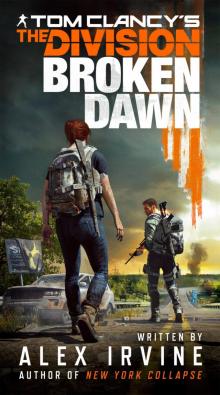 Tom Clancy's the Division
Tom Clancy's the Division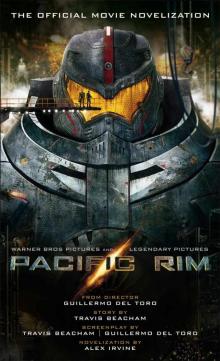 Pacific Rim: The Official Movie Novelization
Pacific Rim: The Official Movie Novelization Anthropocene Rag
Anthropocene Rag Black Lagoon
Black Lagoon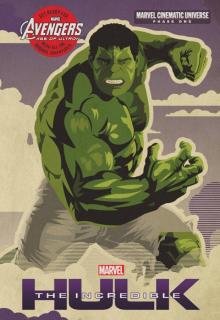 Phase One: The Incredible Hulk
Phase One: The Incredible Hulk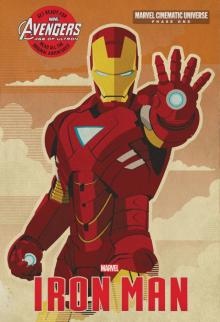 Phase One: Iron Man
Phase One: Iron Man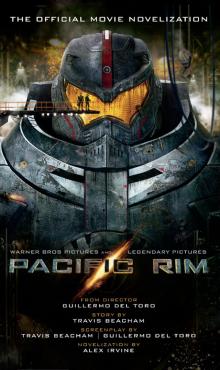 Pacific Rim
Pacific Rim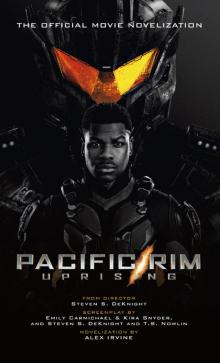 Pacific Rim Uprising--Official Movie Novelization
Pacific Rim Uprising--Official Movie Novelization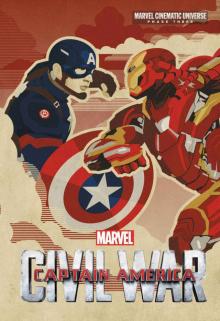 Phase Three: Marvel's Captain America: Civil War
Phase Three: Marvel's Captain America: Civil War Phase One: Thor
Phase One: Thor Dawn of the Planet of the Apes: The Official Movie Novelization
Dawn of the Planet of the Apes: The Official Movie Novelization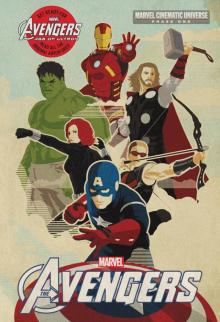 Phase One: Marvel's The Avengers
Phase One: Marvel's The Avengers Phase One: Captain America
Phase One: Captain America Exiles
Exiles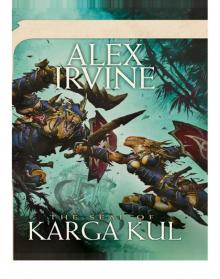 The Seal of Karga Kul: A Dungeons & Dragons Novel
The Seal of Karga Kul: A Dungeons & Dragons Novel Marvel's Ant-Man - Phase Two
Marvel's Ant-Man - Phase Two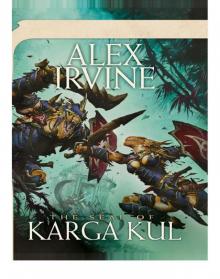 The seal of Karga Kul (dungeons and dragons)
The seal of Karga Kul (dungeons and dragons) Mare Ultima
Mare Ultima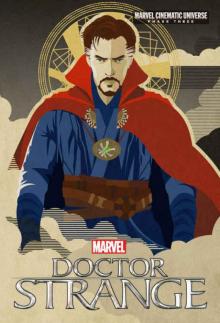 Phase Three: MARVEL's Doctor Strange
Phase Three: MARVEL's Doctor Strange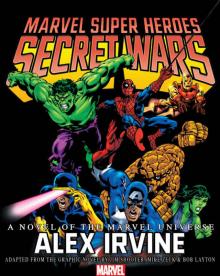 MARVEL SUPER HEROES SECRET WARS
MARVEL SUPER HEROES SECRET WARS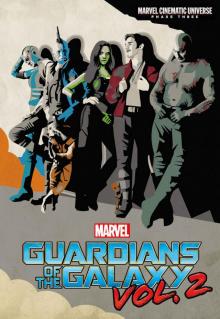 Phase Three: MARVEL's Guardians of the Galaxy Vol. 2
Phase Three: MARVEL's Guardians of the Galaxy Vol. 2 Dawn of the Planet of the Apes
Dawn of the Planet of the Apes Independence Day: Resurgence: The Official Movie Novelization
Independence Day: Resurgence: The Official Movie Novelization